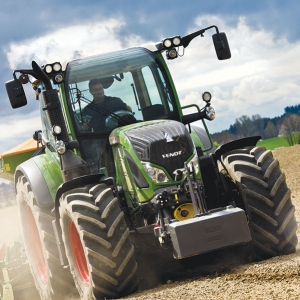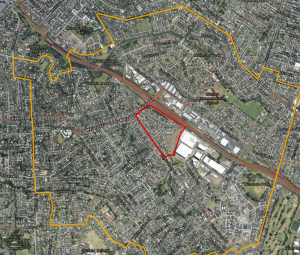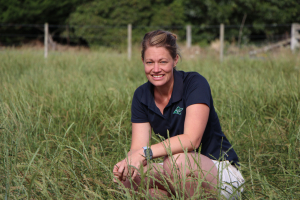A new class of tractor in the compact, standard market segment is now seen in four Fendt models in the 500 Vario series, the company says.
The series embodies many technical features previously limited to the top tractor class.
“Versatile innovations and equipment options give the 500 Vario competitive advantages in the 125-165hp range, including engine performance and fuel saving SCR technology. The VisioPlus cab and Variotronic are also found in this new range.”
The 500 Vario series, with the 512, 513, 514 and 516 models, covers the range from 125165hp. The new tractors are powered by a 4.04L, 4-cylinder-Deutz engine with 4 valves per cylinder and common rail injection.
The 500 Vario series also relies on the fuel-saving SCR technology, says Fendt. “This technology, familiar from the 700, 800 and 900 Vario high-power tractor series, has already proven its fuel economy in neutral PowerMix tests on the 800 and 900’s. With 240g/kWh, the 936 Vario achieved the previously unattained best result in the DLG PowerMix test.”
Fendt says the engines in the 500 Vario’s combine exceptionally low fuel consumption with notable performance, while the stepless speed adjustment provides potential for savings in time and money.
“With the Tractor Management System (TMS), the tractor is always working at an economic optimum. Operators only need to enter the desired speed; then the activated TMS controls the engine and transmission – which results in maximum efficiency. “
The VisioPlus cab, familiar from the 700 Vario tractor series, offers maximum comfort and exceptional visibility.
“The windscreen curves up into the roof and provides a full view ideal for loader work. More room and nearly 6m2 of glazing provides a spacious working environment.”
All functions are optimally placed in the new Varioterminal and the right armrest, which moves along with the driver seat. The controls are logically placed and well thought-out.
As part of the Varioterminal, the automatic steering system, camera function, documentation system and ISOBUS implement control have found their way into this class.
Thanks to the VarioGuide automatic steering system, “longer working periods are a breeze, whether day or night,” Fendt claims.
“The 500 Vario offers the ideal automated functions for pass-to-pass work. The hydraulics allows a wide range of applications for implements designed for this power class. The right armrest is the central operating element. Even during turning manoeuvres, there is no need to switch between controls in the 500 Vario, because operators can comfortably rest their arm on the right armrest and control the tractor and implement with the multi-function joystick and the Varioterminal.”
The company adds that an average of 6% less overlapping, as well as savings in fuel and operating materials— such as seeds and fertiliser, are possible with VarioGuide. In addition, with the VarioDoc documentation system, all relevant data can be logged with the lowest effort possible and in the shortest time, and then documented in the field record and analysed.
The Fendt 500 Vario offers up to five electro-hydraulic double-acting valves at the rear plus two separate in the front, power beyond, and ISOBUS connection. Overall, the 500 Vario has 22 connections, located at the front and rear, enabling flexible and trouble-free connection of implements.
The tractors are said to be fast, flexible and manoeuvrable in transport work. A top speed of 50km/h at a reduced engine speed enables swift and economical on-road driving.
www.fendt.com.au


















